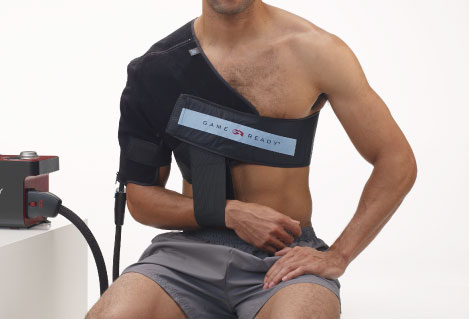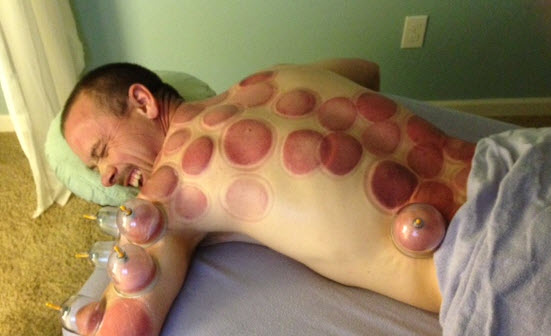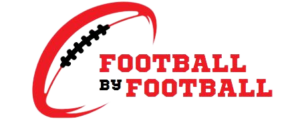Arm preparation for NFL QBs is a year-round exercise
Quarterbacks are fundamentally in the business of their arm strength.
While quick decision-making sets them apart, there can be no quarterback without a rigid arm.
As NFL quarterbacks converge on training camps, the emphasis shifts to that arm care.
The arm must be primed for performance upon arrival and sustain a high level throughout the rigorous demands of camp and the ensuing season.
Much like pitchers in baseball, quarterbacks rely heavily on the integrity of their arms.
However, the stresses and maintenance required throughout the year diverge significantly.
In baseball, a starting pitcher typically throws once every five days.
While there are breaks between starts involving light throwing and preparation, the bulk share of their work is concentrated on game day.
The routine for an NFL quarterback is markedly dissimilar, and mastering this routine constitutes a substantial component of their responsibilities.
Game day takes the largest toll on a quarterback’s arm. Between the heavy volume of throws with pre-warm-ups, warm-ups, and then on the field/sideline to remain loose, it’s not uncommon for a QB to throw 100-200 passes.
The essence of a quarterback’s compensation hinges on their performance during the games, rendering those throws undeniably paramount.
Initially, comprehending the ultimate objective informs a quarterback’s decisions regarding their arm regimen in the offseason and as they gear up for training camp.
Once the season is underway, most throws executed by an NFL quarterback transpire midweek in preparation for the imminent game.
These midweek sessions also encompass individual position drills that necessitate an uptick in pass count.
An array of throws is orchestrated during Wednesday and Thursday practices, encompassing short, intermediate, and long passes, interspersed with high-velocity throws, followed by tosses demanding finesse or a ‘change-up’ if you will.
As the week progresses, the volume of throws undergoes a deliberate reduction, mirroring the diminishing repetitions with the team.
The preparatory regimen on Friday and Saturday varies, contingent on the team’s philosophy.
Some coaches support players to rest the day before the game, potentially allowing for light throws during a walkthrough.
Conversely, others advocate for rest on Friday and a resurgence of throwing on Saturday, aiming to stimulate the central nervous system.
Regardless, there’s a discernible tapering effect, yet throws remain an integral component.
Much like a pitcher in baseball, game day exacts the most substantial toll on a quarterback’s arm.
The sheer volume of throws, encompassing pre-warm-ups, warm-ups, and those executed on the field or sideline to maintain readiness, can range from 100 to 200 passes—a significant exertion.
Subsequently, the ensuing day is typically designated as a recovery period, during which most quarterbacks abstain from throwing altogether, except for teams that engage in a walkthrough to rectify errors or gain an edge against their next opponent.
Then comes the renowned “off day” on Tuesday, which is anything but a day of rest.
Instead, it offers quarterbacks a prime opportunity to refine their skills and address underlying fundamental issues.
The tally of throws is relatively moderate, typically within the range of 50 to 75.
Considering the cumulative load of training camp, preseason games, and 16 regular season matchups, it becomes evident that this sustained effort in hurling the football can exact its toll on even the most seasoned quarterbacks.
How do NFL QBs prepare their arms for the rigors of a season?
The journey towards peak performance commences right after the final game, with a crucial phase: REST.
Each quarterback has a finite number of throws in their arsenal before the asymmetrical motion becomes taxing on the body, leading to wear and tear on joints and ligaments.
In the off-season, training activities kick off in April, a shift that once relegated what was known as “QB school” from spring practices.
This school of thought gave quarterbacks a head start over other positions, allowing for deep dives into film analysis while refining biomechanics and honing fundamentals.
However, this paradigm shift arose with the 2011 Collective Bargaining Agreement.
Consequently, quarterbacks now allocate more time to arm recuperation, often limiting throws to 1-3 times a week as April approaches.
Furthermore, a significant portion of a quarterback’s arm preparation is conducted within the confines of the weight room.
While Rotator cuff exercises are prominent, an optimal arm regimen demands more.
Incorporating Medicine ball exercises cultivates core strength and fortifies the entire physique, alleviating stress on the arm.
Lower body weight training serves a dual purpose: enhancing power and fortifying balance.
A quarterback must maintain equilibrium and stability while maneuvering in the pocket.
The more adept and robust they are in this stance, the greater precision in their throws.
Varied exercises, including the renowned Jobe’s Routine (or many others), have become indispensable components of the pre-habilitation and rehabilitation routine.

To comprehensively engage the muscle groups governing the throwing motion, it’s imperative to devote attention to the back.
The muscles responsible for arm deceleration are situated on the posterior side of the body.
The standard practice is a balanced regimen featuring a 2-to-1 ratio of back or pull exercises to pushing exercises.
This regimen fosters heightened strength in the muscles most susceptible to wear and tear.
Going beyond basic lifting, scapular exercises hold tremendous significance.
They furnish essential back and shoulder stability, ensuring proper alignment and fluid motion.
This particular preparation spans the lead-up to and throughout OTAs and mini-camps, culminating in a six-week hiatus before the commencement of training camp.
During this summer break, quarterbacks scale back their throwing routines again, allowing for recovery from the cumulative strain of the offseason.
Given the expanded 90-man rosters and the increased reps quarterbacks often undertake in offseason practices, the toll incurred during this period is somewhat mitigated compared to the rigors of training camp for a starting quarterback.
Nevertheless, the rest remains a pivotal phase following the conclusion of the mini-camp.
Subsequently, quarterbacks gradually reintegrate, throwing into their routines, aiming to sustain a state of readiness and vitality in anticipation of camp.
Some teams find it beneficial to convene once a week for throwing sessions, especially if players happen to be in the same city, or they may collectively assemble at a designated locale for a blend of leisure and light practice sessions.
Following their throwing sessions, quarterbacks employ a range of strategies to optimize the longevity of their throwing arm.
Among these, some opt for a regimen involving icing and anti-inflammatory medications.
Icing methods can range from the straightforward application of a bag of ice to the more sophisticated use of a “Game Ready” system, which combines ice with compression to alleviate inflammation further.
Alternatively, some quarterbacks prefer a cool-down throwing session, consisting of gentler throws, to reinforce specific improvements they are working on.
Subsequently, a massage is administered to alleviate any soreness or muscle strains that may have arisen.
The approach adopted—whether one of these methods or a combination thereof—varies based on individual preference and what each quarterback believes best facilitates their recovery.
A QB is constantly in an asymmetrical movement which forces their hips and back out of alignment. Chiropractors help realign the body to its natural state and provide various soft tissue techniques to help.
Innovative technologies, including electrical stimulation units, are occasionally employed on quarterbacks’ arms to enhance strength or alleviate muscle fatigue and soreness, though such practices remain infrequent.
Additionally, chiropractic care is often sought to realign a quarterback’s body, mitigating further strain on their overall physical well-being.
Given the continuous asymmetrical movement quarterbacks undergo, their hips and back tend to fall out of alignment.
Chiropractors specialize in restoring the body to its natural state, employing various soft tissue techniques.
The Graston Technique, an instrument-assisted soft tissue mobilization, kickstarts the body’s innate inflammatory response.
While it may induce some bruising or skin redness, beneath the surface, the body is orchestrating a surge of blood flow to expedite muscle repair and recovery.
This method is not for the faint of heart, but its effectiveness is noteworthy.
Another method, “cupping,” shares similarities with the Graston Technique but is less discomforting.
Suction cups are applied to areas of fatigue or soreness, extracting air to separate the fascia from the skin and muscle.
This action rekindles the body’s natural inflammatory response and diminishes muscle tissue adhesion.
Bruising is a common side effect, resembling a sizable hickey, yet this is a positive indicator.
It signifies that the body is directing revitalizing cells to the needy area. The bruising tends to fade within a few days.

The ART (Active Release Technique) involves precision-focused manipulation of soft tissue, targeting areas of discomfort.
By applying pressure and incorporating specific movements, the aim is to elongate the muscle tissue and enhance the overall range of motion.
Quarterbacks incorporate this technique before and after their throwing sessions, guided by what they believe suits them best.
MAT (Muscle Activation Techniques) serves to optimize the coordination of muscle groups, ensuring they engage in the correct sequence and operate at peak capacity.
This involves conducting muscle tests to identify weaknesses and facilitate muscle activation.
The protocol extends from the core to the arms and legs in a meticulously orchestrated sequence.
Notably, this technique was special in Peyton Manning’s rehabilitation regimen as he recovered from neck surgery.
Furthermore, Acupuncture entails the strategic placement of needles, believed to alleviate muscle tension and promote the flow of ‘energy’ through a meridian system rooted in Eastern medicine philosophy.
Augmented by electrical stimulation, this approach is designed to amplify its efficacy in mitigating muscle irritation.
Indeed, the exact process that quarterbacks undergo to prime their arms for the season is comprehensive.
For a quarterback, investing in proper care is a strategic move that yields dividends in the long run.
The techniques and exercises outlined here are widely embraced in the league, often serving as cornerstones of their routines and contributing to their enduring, illustrious careers.
Some quarterbacks select from this repertoire, tailoring their regimens to suit their individual needs while keeping a close eye on their throwing volume.
However, don’t expect quarterbacks to divulge their specific combinations openly.
They tend to guard their formulas closely, viewing them as a competitive edge—an assertion that may hold weight.
Regardless, as the season kicks off and the spotlight shines on quarterback performances, it’s essential to recognize that the groundwork for their success has been laid over an extended period.
For quarterbacks, the term “offseason” seems almost paradoxical.

